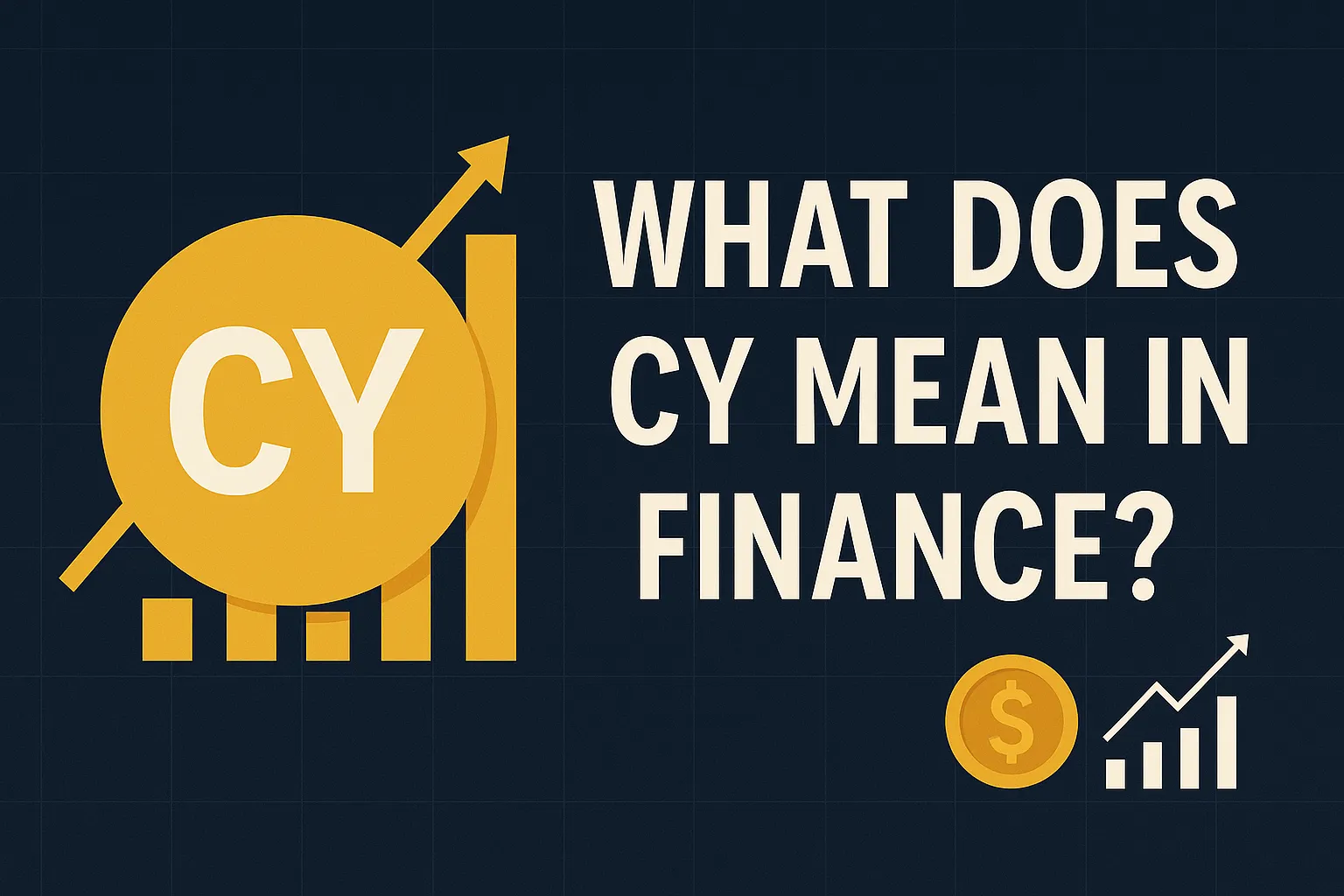What Does CY Mean in Finance? Crypto Yield Explained
What Does CY Mean in Finance? And Why It Matters in Crypto
CY in financial terms means Current Yield, historically being the return of an investment on a year-over-asset basis divided by its market price at the time. This concept of CY is equally robust in crypto — instantaneous staking, farming, or lending returns, helping investors and traders make more precise yield-focused decisions without needing to rely on exaggerated APYs or extended estimates.
Table of Contents
- What Is CY in Traditional Finance?
- CY vs APY in Crypto
- Real DeFi Examples of CY
- Why Crypto Traders Should Care About CY
- Frequently Asked Questions
- Final Thoughts
What Is CY in Traditional Finance?
In legacy-land, Current Yield (CY) is what investors use to measure how much money an asset with a set income (like a bond) makes relative to its current value. For example, a bond paying $50 annually which currently costs $1,000 has a CY of 5%. It’s a snapshot in time metric — it ignores capital gain and compounding. It’s yield plain and simple.
CY vs APY in Crypto
In crypto, you rarely ever type out the words “CY” but there is a principle behind it in almost every DeFi protocol. Having ETH staked on a protocol like Lido or Rocket Pool shows yields denominated as APY, but behind the figure is an actual payback rate in real time — your real CY.
What’s the difference? APY adjusts for compounding. CY is raw, unleveraged return. For liquidity farmers, short-term investors, or anyone moving capital between protocols weekly, CY reflects a clearer snapshot of return up front — no hype, no assumptions.
Real DeFi Examples of CY
Some instances where CY appears in the Web3 world include:
| Protocol | Use Case | CY Equivalent |
|---|---|---|
| Lido | Staking ETH | Variable daily yield on stETH ≈ CY |
| Pendle Finance | Yield tokenization | Tradable future yield based on current pricing |
| Yearn Finance | Vault strategies | Snapshot of current earnings if compounded paused |
For sites like Pendle, yield isn’t a reward you receive but a commodity you can buy, sell, or lock in based on market forces. It’s a new twist on an old metric.
Why Crypto Traders Should Care About CY
APY reads great on paper but is misleading — especially where compounding is implicit or tokens are hyped up with rewards. CY boils it down for you. When you have to decide between two LP spots or two yield farms, having your current payout rate — your CY — can better advise you to make a more aggressive choice.
For example, if Curve is offering 6% CY and another farm is displaying 10% APY with compounding + bonus tokens, the Curve position may be more stable and less volatile. CY cuts through the noise and shows the yield reality *today*.
And when DeFi users begin comparing real-world yields — such as tokenized treasury bills or RWA-backed stablecoin vaults — CY becomes the shared language between TradFi and Web3.
Frequently Asked Questions
What is CY in crypto?
CY in crypto is essentially the real-time yield you’re earning from staking or farming, before compounding. It mirrors the traditional definition of “current yield” but applies it to DeFi mechanics.
Is CY the same as APY?
No. CY is the raw, non-compounded yield. APY includes compounding effects. APY can overstate returns for short-term holders, while CY reflects what you’d earn today without assumptions.
How is CY calculated in crypto staking?
You divide the projected annual staking rewards by the current value of the staked asset. For example, if staking earns $60 on a $1,000 token position, the CY is 6%.
Which DeFi protocols show actual CY?
Platforms like Pendle, Lido, and Curve do this indirectly by showing CY via real-time APY data. Pendle is unique because it allows you to price and swap the yield, showing the current rate based on market pricing.
Final Thoughts
CY is a retro measure, but it’s just as relevant in crypto — and maybe even more so for active traders who exchange capital quickly, need immediate returns, or don’t wish to be misled by fake APYs. APY might be sexier, I suppose, but CY paints the real picture of yield, naked of spin.
And in a culture where speed and precision matter, having CY at your fingertips is more than a finance tidbit — it’s a strategic edge.
➔ Post created by Robert AI Team




